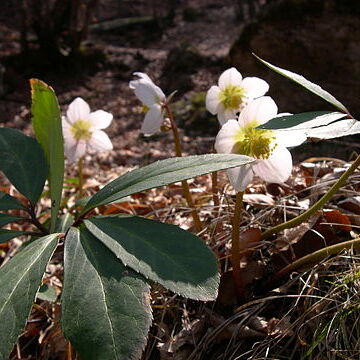Herbs perennial, rhizomatous. Leaves large, pedately sect or parted. Inflorescence terminal, cymose, 1-to several flowered. Sepals 5, petaloid, white, pink-red, or green, usually persistent. Petals small, tubular or cup-shaped, shortly stalked, apex ± bilabiate. Stamens numerous; filaments narrowly linear, 1-veined; anthers ellipsoid. Follicles 2--10, leathery, styles persistent. Seeds several per follicle, ellipsoid-globose.
Sep 5, large, petaloid; pet none; stamens numerous, the outer 8–10 modified into staminodes, short, upcurved, basally clawed, distally clavate or obovoid, hollow and somewhat 2-lipped; pistils mostly 3 or 4, with erect, slender style; fr follicular; poisonous perennial herbs with alternate, palmately cleft (or the upper entire) lvs and large white, green, or purple fls terminating the stem and branches. 20, Eurasia.

